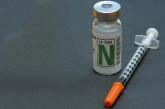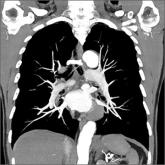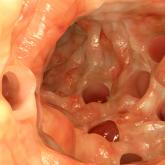Article

NPH insulin: It remains a good option
- Author:
- Ben Arthur, MD, FAAFP
- Ashley Smith, MD
- Nick Bennett, DO, FAAFP
- David Bury, DO, FAAFP
- Bob Marshall, MD, MPH, MISM, FAAFP
NPH insulin holds its own against basal insulin analogs—and it’s cheaper.
Article

Supplemental oxygen: More isn’t always better
- Author:
- Ashley Smith, MD
- Bob Marshall, MD, MPH, MISM, FAAFP
- Nick Bennett, DO
- Benjamin Arthur, MD
- Michael Dickman, DO
A recent study says that in certain populations, supplemental oxygen above certain levels can increase mortality.
Article

A Better Approach to the Diagnosis of PE
- Author:
- Andrew H. Slattengren, DO
- Shailendra Prasad, MBBS, MPH
- David C. Bury, DO
- Michael M. Dickman, DO
- Nick Bennett, DO
- Ashley Smith, MD
- Robert Oh, MD, MPH, FAAFP
- Robert Marshall, MD, MPH, MISHM, FAAFP
A simple diagnostic algorithm is all that’s needed to safely and effectively reduce reliance on CT pulmonary angiography to diagnose pulmonary...
Article

Can Vitamin D Prevent Acute Respiratory Infections?
- Author:
- Bob Marshall, MD, MPH, MISM, FAAFP
- Nick Bennett, DO
- Ashley Smith, MD
- Robert Oh, MD, MPH, FAAFP
- Jeffrey Burket, MD, MBA, FAAFP
A systematic review and meta-analysis say “Yes”—but the dosages used may not be what you’d expect.
Article

A better approach to the diagnosis of PE
- Author:
- Andrew H. Slattengren, DO
- Shailendra Prasad, MBBS, MPH
- David C. Bury, DO
- Michael M. Dickman, DO
- Nick Bennett, DO
- Ashley Smith, MD
- Robert Oh, MD, MPH, FAAFP
- Robert Marshall, MD, MPH, MISHM, FAAFP
A simple diagnostic algorithm is all that’s needed to safely and effectively reduce our reliance on CT pulmonary angiography to diagnose PE.
Article

Can vitamin D prevent acute respiratory infections?
- Author:
- Bob Marshall, MD, MPH, MISM, FAAFP
- Nick Bennett, DO
- Ashley Smith, MD
- Robert Oh, MD, MPH, FAAFP
- Jeffrey Burket, MD, MBA, FAAFP
A systematic review and meta-analysis says Yes, but the dosages used may not be what you’d expect.
Article

First-time, Mild Diverticulitis: Antibiotics or Watchful Waiting?
- Author:
- Bob Marshall, MD, MPH, MISM, FAAFP
- Shailendra Prasad, MBBS, MPH
- Mary Alice Noel, MD
- Jeffrey Burket, MD, FAAFP
- Michael Arnold, DO, FAAFP
- Benjamin Arthur, MD
- Nick Bennett, DO
- Ashley Smith, MD
Don’t jump to antibiotics for mild, uncomplicated diverticulitis, a recent clinical trial says. Observation may be just as effective.
Article

First-time, mild diverticulitis: Antibiotics or watchful waiting?
- Author:
- Bob Marshall, MD, MPH, MISM, FAAFP
- Shailendra Prasad, MBBS, MPH
- Mary Alice Noel, MD
- Jeffrey Burket, MD, FAAFP
- Michael Arnold, DO, FAAFP
- Benjamin Arthur, MD
- Nick Bennett, DO
- Ashley Smith, MD
Don't jump to antibiotic Tx for mild, uncomplicated diverticulitis, a recent RCT says. Observation may be just as effective.
